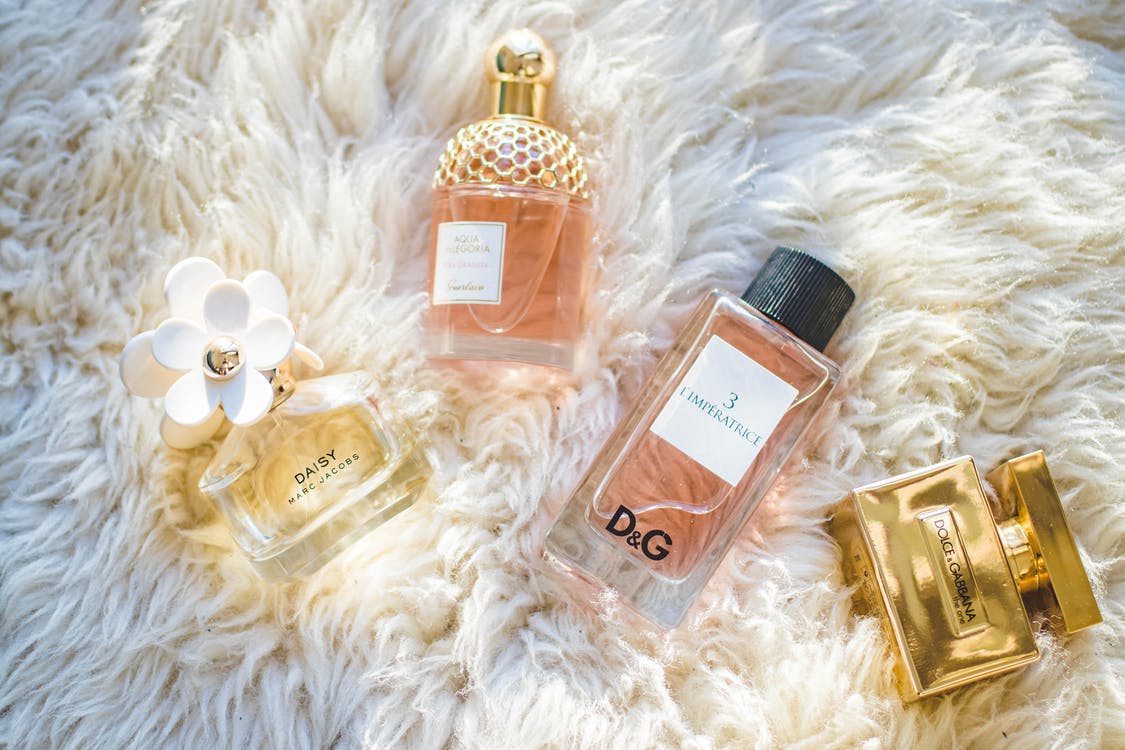For most end-users, deciding on perfume is a simple matter of taking a whiff and deciding whether or not they like it. More advanced users rub it on their skin and let it sit there for approximately an hour before they make a decision. However, true connoisseurs of women’s perfumes wait from a few to several hours before giving their verdict.
Why give perfume time before you decide to buy it or pass on it? Perfumes are wonderfully complicated concoctions that could easily have a hundred ingredients. However, to assess whether or not a perfume suits you, remember these three things: top, heart, and base.
Table of Contents
The Structure of Perfume
Perfumes are an amalgamation of individual fragrance notes that make up a cohesive or whole fragrance.
Top Notes
At the top, the so-called top notes, are the scents that hit you immediately upon opening the bottle. They lure you in and create your initial impression of a perfume.
Top notes are typically bright, energizing scents like lemon, bergamot, gardenia, peach, mandarin, orange blossom, lily flower, blood orange, and frangipani. However, exotic formulations can have top notes of saffron, red currant, and vanilla.
Top notes typically last only from five to 15 minutes, after which the heart notes take over.
Heart Notes
Heart notes are a perfume’s middle notes. They are what perfume users generally mean when they talk about “the scent” of a particular perfume. They are full-bodied fragrances that can last within 20 minutes to one hour of perfume application.
Perfume-makers can use a wide range of fragrances as their middle notes. Typical heart notes are floral or herbal. Thus, you will often see perfumes list down their heart notes as iris, Bulgarian rose, patchouli, vanilla, jasmine, osmanthus, lavender, and cherry blossom, among others.
However, exotic perfumes can have atypical heart notes. Such perfumes would have heavier heart notes, using fragrances that typically serve as the base in more conventional perfumes.
Base Notes
Base notes are the scents that underscore or serve as an anchor for the heart notes, and they linger long after the heart notes have dissipated. Made using richly and heavily scented oils, they are the least volatile scents in a perfume, so they could easily last six hours or longer on the skin.
Base notes are typically musky, woody, earthy, and smoky. Base fragrances include sandalwood, musk, tobacco, cashmere wood, ambergris, agarwood (oud), cedarwood, pridewood, vetiver, leather, and incense.
If you smelled some of the base scents on their own, you might be forgiven for saying they smell like mold, damp animal, root vegetables, sweat, or fecal matter. In fact, one of the most expensive perfumery ingredients — agarwood — can smell like animal urine. Aren’t perfumes incredibly wonderful?
Exotic Scents to Look for in Your Next Perfume
If you are in the market for exotic and bold perfume, check the ingredients list — particularly the perfume’s heart and base notes.
Tip: Look for a perfume whose middle notes consist of aromas that traditionally comprise the base of conventional perfumes. That could be the bold and unique fragrance you’re looking for in your next bottle.
Below are three heart and base notes you might want to look for in your next perfume. These may not seem so appealing on paper, but remember that they are used in concert with other fragrances. They meld really well with other ingredients and help give perfumes an uncommon, unique, and long-lasting fragrance.
1. Agarwood
Agarwood is the heartwood of a fungal-infected Aquilaria tree. Unlike the heartwood of non-diseased Aquilaria trees, agarwood is streaked with resin (sticky sap) that the tree produces in response to the fungal attack. The resin is where the essential oil of agarwood, the oil of oud, is extracted through water or steam distillation.
Oud or agarwood oil is one of the world’s most expensive perfume ingredients. Agarwood oil can sell from USD 50,000 to USD 80,000 per liter, depending on quality and origin. First-grade agarwood also costs more than gold, selling for as much as USD 100,000 per kilogram.
The scent: Oud smells deep, animalic, intense, and smoky. It’s a scent one either loves passionately or hates fiercely, but it’s a scent that undoubtedly turns heads.
If you’ve spent some time in the Arabian Peninsula, you would already be familiar with this scent. Agarwood chips or wood chips soaked in oud oil are popularly used as dakhoon or bakhoor to perfume living spaces and abayas and as a scent to accompany prayer and meditation.
2. Vetiver
Vetiver is an ingredient harvested from the roots of Vetiveria zizanioides, a perennial grass that grows abundantly in the marshes and riverbanks of Asia (mainly India and Malaysia) as well as Haiti, Brazil, and other tropical countries
The scent: Vetiver is earthy and damp. It smells like a sack of root crops, but it is musky, woodsy, smoky, and sultry at the same time. This works well as a base scent because of its excellent fixative properties that help anchor or stabilize perfume, helping the fragrance last longer
3. Ambergris
Is it a sperm whale’s vomit or feces? The world is torn on whether the whale regurgitates ambergris or passes it through as fecal matter and, in the latter case, whether the whale does so readily or so violently that its rectum fatally ruptures.
While the world might never know how ambergris emerges from the whale, it is clear that it forms inside the whale’s intestines. It is, in fact, a collection of the beaks and pens and inedible parts of the squids, cuttlefish, and the whale’s other cephalopodic prey, compacting over time and forming this dense mass that doesn’t smell so lovely fresh but smells more pleasant after it dries out.
Ambergris is valuable because of ambrein, an odorless substance that works exceptionally well as a fixative in perfumes. Usually, the lighter the color of ambergris, the more valuable because lighter ambergris has more ambrein. Thus, white ambergris is more expensive than black ambergris.
Ambergris can sell for up to USD 40,000 per kilogram.
The scent: Ambergris smells musky, animalic, and sweet. It also has hints of marine, earthy, and tobacco scents. Some describe it as smelling distinctly fecal.
Let Your Base Be Your Heart
The next time you’re in the market for a bottle of perfume, look at the perfume’s description, particularly its top, middle, and base notes. If you want bold and long-lasting perfume, look for one with a heart made of typical base fragrances. Agarwood is particularly a good heart note if you’re looking for something exotic. Finally, when trying out perfume, let it sit on your skin for hours; only then can you thoroughly assess it.

